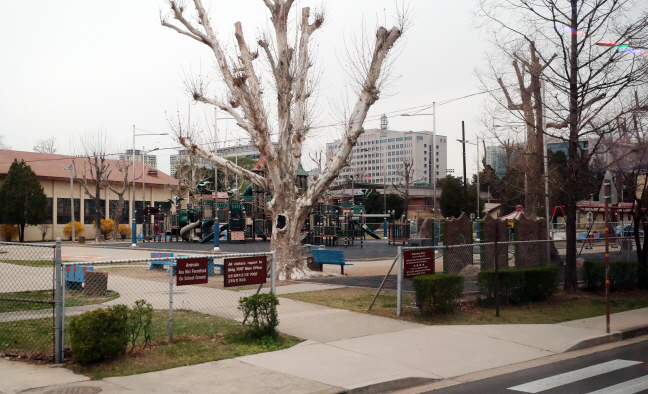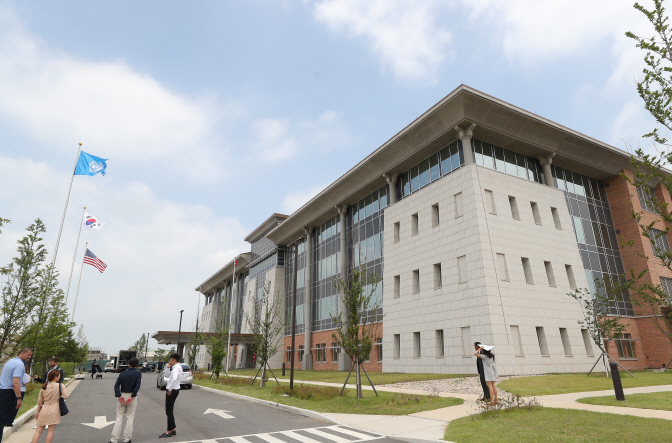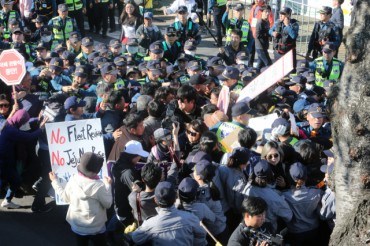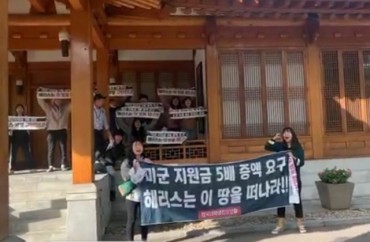SEOUL, Dec. 11 (Korea Bizwire) — The United States on Wednesday returned four of its military bases in South Korea in a decision to end a yearslong delay caused by differences on decontamination procedures and to allay worries over the adverse impact of the delay on regional development schemes.
South Korea and the U.S. also initiated the long-awaited return process for the Yongsan Garrison in central Seoul, once home to the headquarters of the U.S. Forces Korea (USFK), to ensure that a mega project to establish a national park there proceeds as scheduled.
The four returned bases are Camps Eagle and Long in Wonju, 130 kilometers east of Seoul; parcels of Camp Market in Bupyeong, just west of the capital; and the Shea Range parcel at Camp Hovey in Dongducheon, just north of Seoul.
They were already closed between 2009 and 2011.
The allies made the agreement at the 200th joint committee meeting of the Status of Forces Agreement (SOFA) at Camp Humphreys, a sprawling U.S. military complex in Pyeongtaek, 70 kilometers south of Seoul. SOFA governs the legal status of 28,500 American troops here.
Ko Yun-ju, director-general of the North American affairs bureau at Seoul’s foreign ministry, and USFK Deputy Commander Lt. Gen. Kenneth S. Wilsbach, who also heads the 7th Air Force, presided over the SOFA meeting.
The two sides agreed on the return of the bases on the condition that they continue consultations on responsibilities for base decontaminations, ways to strengthen the environmental management of installations currently under USFK control and other related issues, Seoul officials said.
The agreement came after the presidential office Cheong Wa Dae displayed its desire in August to expedite the handover process of 26 U.S. military installations amid residents’ worries that a further delay could complicate decontamination efforts for already vacated bases and regional development prospects.
The return is part of a broad relocation scheme to consolidate U.S. bases across the peninsula into two garrisons in Pyeongtaek and Daegu, with an aim to enhance defense readiness and operational efficiencies in the face of North Korean nuclear and missile threats.
Seoul stressed that Wednesday’s agreement is meaningful as the allies have agreed to leave the door open for continued consultations over decontamination and environmental issues concerning base returns, as well as on related “institutional” improvements.
“The government will make efforts to make the desired achievements through continued consultations with the U.S. side,” a press release read.
After the return of the bases, South Korea will first carry out the decontamination process and then decide whether to sell off the sites, keep them as part of government assets or assign them for military purposes.
The combined cost of the decontamination work, expected to take about two years, is estimated at 110 billion won (US$92 million).
Seoul plans to discuss the cost issue with the U.S. later, but Washington could refuse to divvy it up based on the claim that no USFK personnel reported any specific health problems stemming from their stay at the bases.
Some observers raised the need for Seoul to use its shouldering of the clean-up expenses to bolster its leverage in ongoing negotiations on the sharing of the cost for stationing the USFK.
Since early this year, the allies had run a joint working group consisting of civilian environmental and legal experts on the decontamination issue but failed to bridge their differences.
In a separate press release, the U.S. military said that it has 13 additional “completely vacated and closed” sites that are ready for return now, in addition to the four sites that were returned Wednesday.
It also said that as a testament to the bilateral alliance, USFK remains committed to returning installations “as expeditiously as possible” to South Korean government control in line with its base relocation schemes and SOFA rules.
The latest agreement at the SOFA committee meeting reflected hopes by many South Koreans that Yongsan, long dominated by foreign forces including the Japanese during Tokyo’s colonial rule of the peninsula, will be fully returned to them.
USFK established its Yongsan headquarters in July 1957 after the end of the 1950-53 Korean War.
A large group of U.S. troops first entered the peninsula in September 1945, less than a month after Korea was liberated from Japan’s 36-year-long colonial occupation.
Their mission was to disarm Japanese troops south of the 38th parallel, a line drawn by the United States and the then-Soviet Union.
As part of its postwar military realignment, Washington began curtailing its troops in East Asia, then a region of less strategic significance than Europe.
In June 1949, it withdrew all troops in Korea except for some 500 of the U.S. Military Advisory Group.
Following the North’s invasion into the South on June 25, 1950, American troops returned to the peninsula to defend the South under a U.N. mandate.
During the Korean War, the U.S. dispatched more than 320,000 troops to the South.
Currently, the USFK maintains some 28,500 troops. But the troop level can drop below that number or swell to over 30,000 due to the presence of rotational units or training exercises.
(Yonhap)








